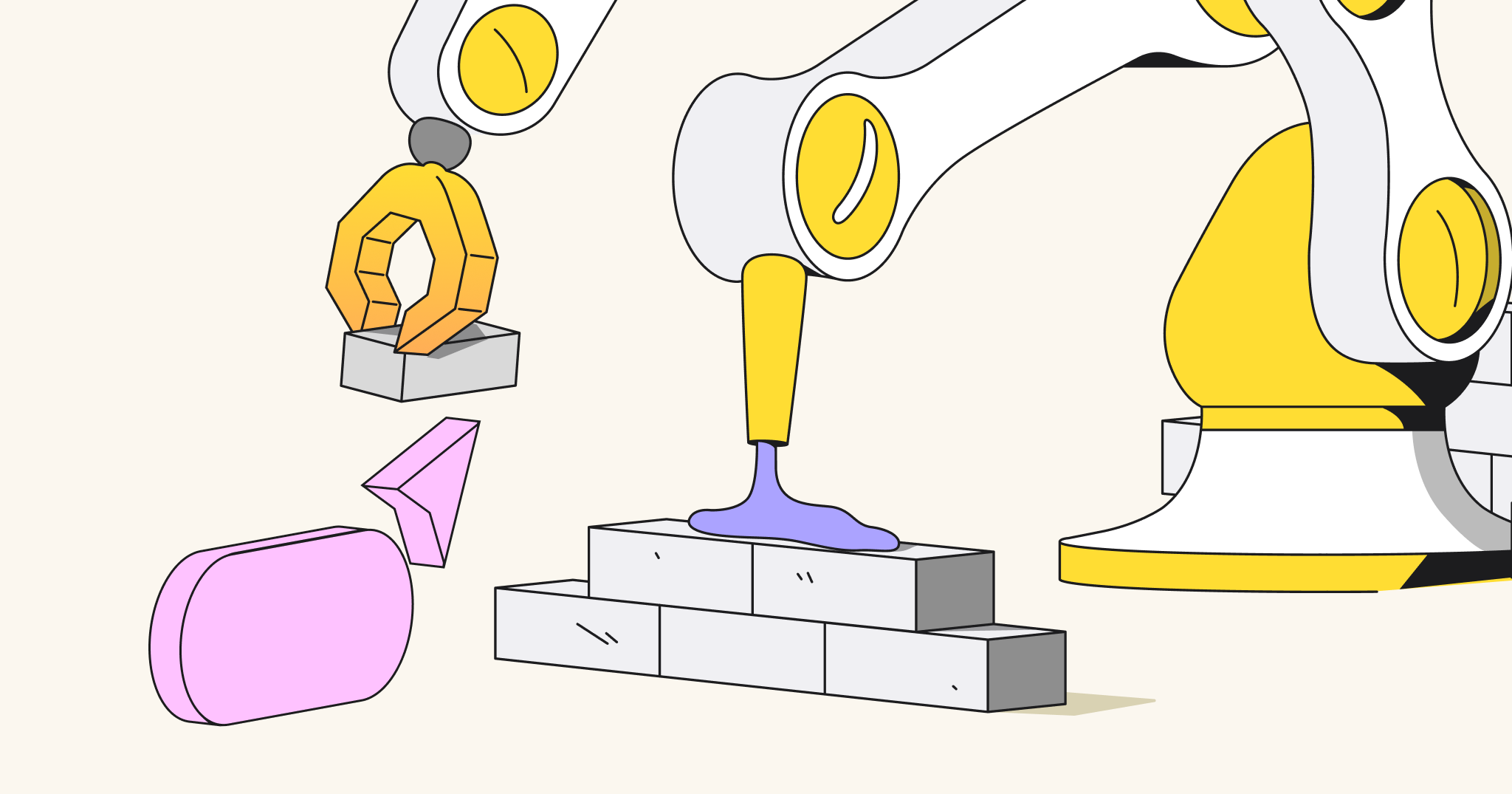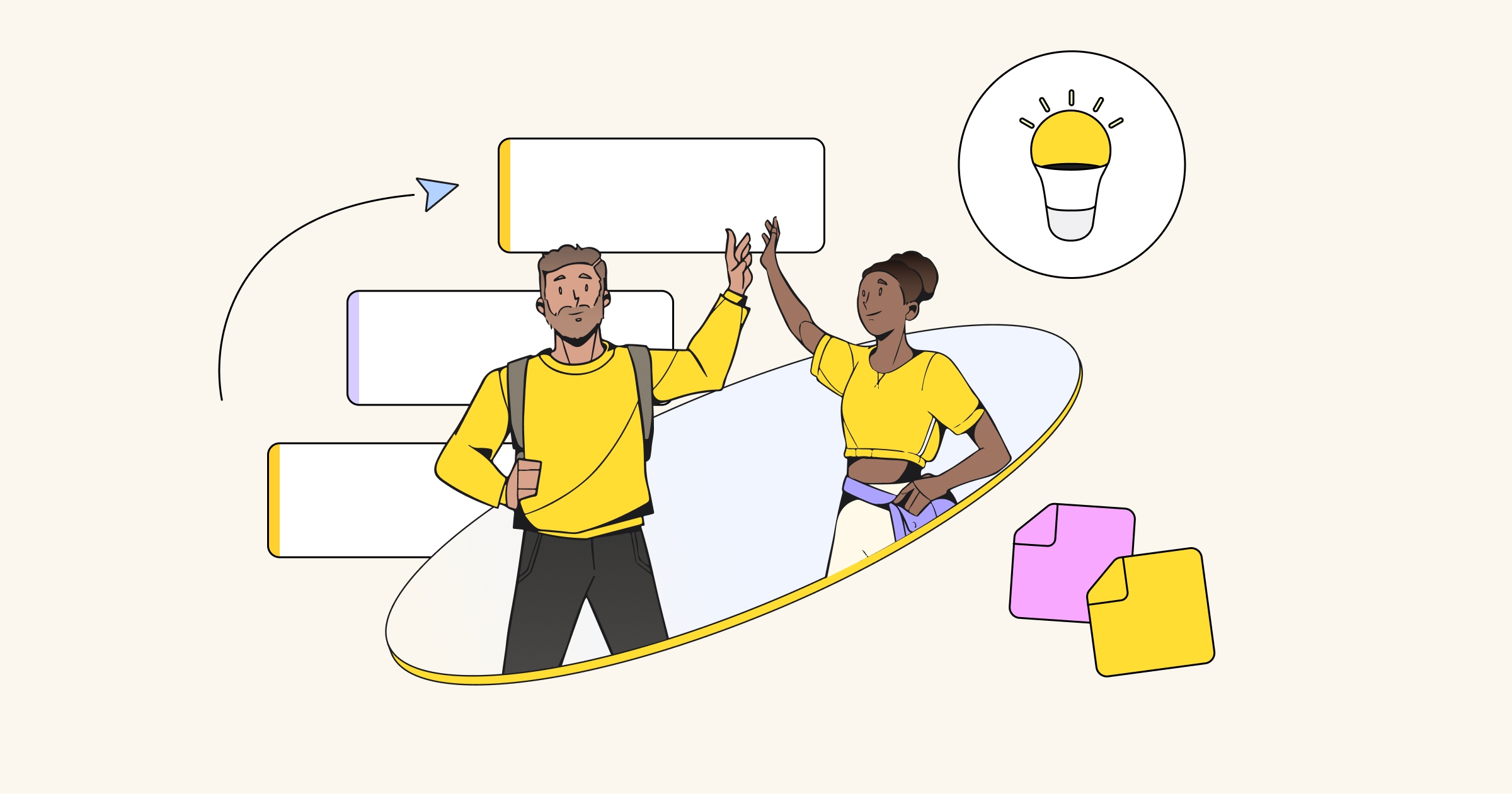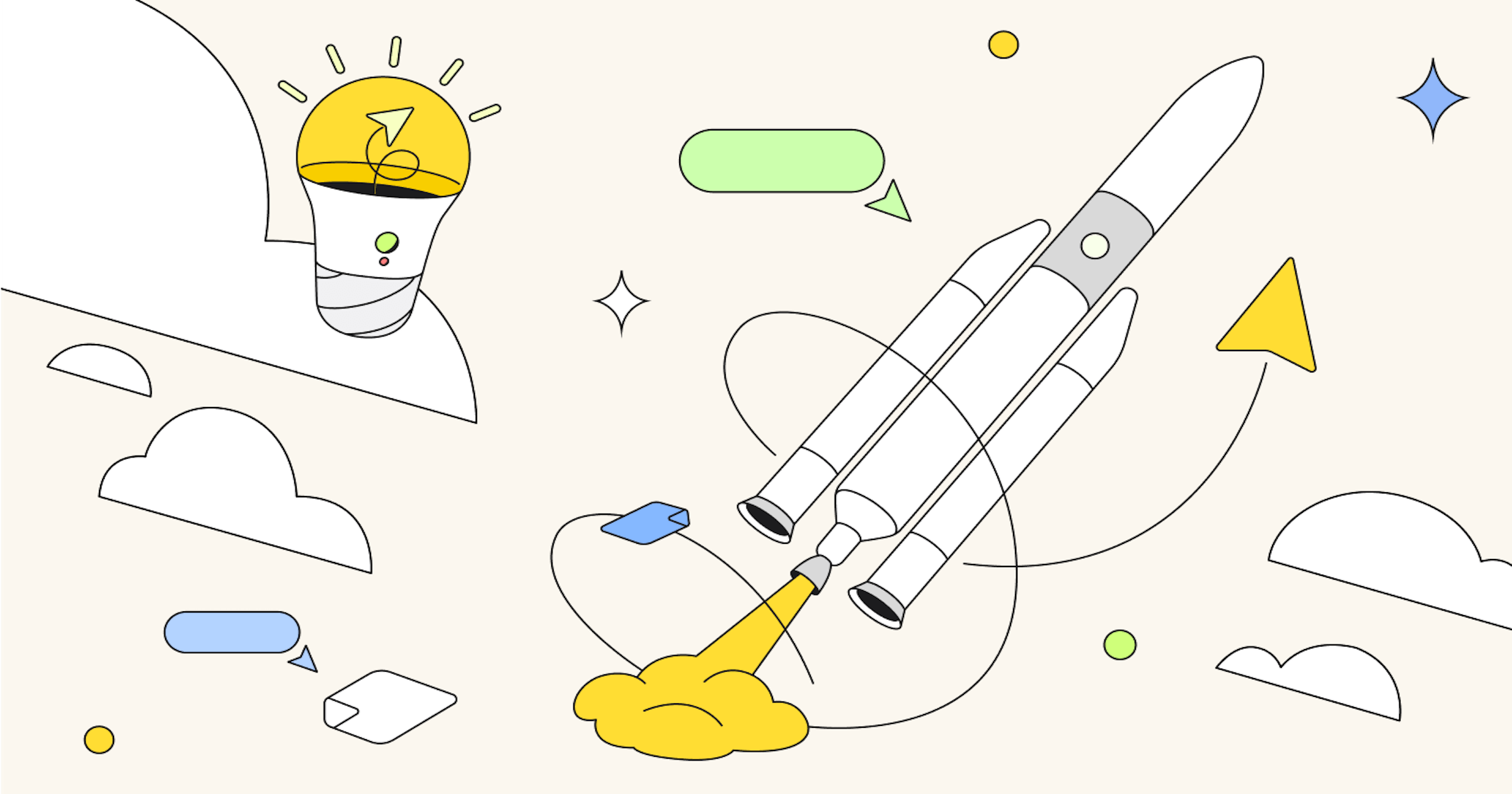Germany-based Munich Re is one of the world’s leading reinsurers, building technology to help insurance providers find and procure a secondary layer of coverage that enables them to meet their customer commitments and navigate high-cost events like natural disasters.
The Horizons Team for Munich Re Automation Solutions team is responsible for staying ahead of customer needs through continuous innovation. They develop new, user-centric cloud products that simplify the insurance-buying process for both insurers and consumers. Often, this means leveling-up processes that are decades old: a complex, high-stakes job.
Their product development workflow is highly collaborative, involving multiple stakeholders including researchers, product managers, and executives at different points. Hence, one of their main challenges is unifying this work to align all teams and working faster and better cross-functionally. As a hybrid team — collaborating across multiple locations — they use Agile methodologies to move decisively and iterate quickly.
To accomplish their ambitious product goals, the team needed to set up the processes and tools to support efficient workflows from any location. Miro came forward as the obvious collaboration tool of choice because of its intuitive interface that allows new hires to onboard quickly, templates that provide the building blocks to move efficiently, and infinite visual canvas that gives them the ability to capture and streamline work.
“For us, Miro has become the go-to collaboration tool. When we would have previously gone to a physical whiteboard, we now go to Miro.“
EMANUEL NEUMANN, Senior Product Designer at Munich Re
Building alignment at every stage of product development with Miro
One of the main roles of product management is to build alignment within their teams and with outside stakeholders, across multiple departments, at different stages of the product development lifecycle. When everyone is on the same page and has all the context and understanding, the team can move faster, be more innovative, and create better products.
Setting up the team for success
From day one during project kickoff, alignment is critical to success. Getting the team together to agree on goals, set hypotheses, and ensure the process is clear serves as “ground zero” for effective product development.
As the project evolves and moves through production, each hand-off in the development lifecycle carries the risk that knowledge and context might fall through the cracks. From product vision documents and roadmaps to user flows and research, the Automation Solutions team needed a central source of truth to lead stakeholders along the journey. Creating a strong foundation like this also makes it easier to onboard new people into the project.
Bringing stakeholders along for the ride
Miro is the heart of how the Automation Solutions team organizes project work and brings everyone into the same conversation. Previously, the team had to manually collect insights from across 20+ documents to bring cross-functional work together. Not only did this make it harder to tell the full story, but it slowed the project down.
With Miro, the team doesn’t need to perform this time-consuming retroactive packaging. Miro is integrated into every step of the process from the start — so the end-to-end story is built organically as the project progresses. Sharing features and contextual commenting allow teams to keep each other up to date as the project board evolves.
By the time the teams need to run a stakeholder review session, an attractive and easy-to-follow visual representation of the project is already live on the board: discovery, brainstorms, technical diagrams, and more. This saves hours in meeting preparation and makes it much easier to build alignment.
“The research is at the top of the board, and at the bottom it shows where we are today with the product launch. I can take an exec through this board and visually explain how we did it every step of the way.“
PHILIP MCCUSKER, Product Manager at Munich Re
And, as every product manager knows, when everyone who’s part of the project is aligned, it increases your speed to market, leads to greater innovation, and improves the quality of work. In fact, Product Managers at Munich Re use Miro to keep all stakeholders on the same page at every stage of the end-to-end product development lifecycle.
Learn more about what Miro can do for your organization
Miro’s role in discovery, refinement, and delivery
Munich Re embraced Lean product development principles and design thinking: iterative cycles of research, analysis, ideation, prototyping, and development. Design thinking is instrumental in allowing the team to keep their finger on the pulse of the customer’s needs and to build products that are both data-informed and human-inspired.
The team uses Miro to engage in design thinking activities aimed at understanding the market, investigating unmet customer needs, and uncovering the potential for new use cases — then they develop prototypes and test them with customers for feedback.
“Miro helped us with the design thinking process. We could actually show all the artifacts to our stakeholders in a very visual way and get buy-in. And it’s even easier to do than when we were in the office.“
EMANUEL NEUMANN, Senior Product Designer at Munich Re
Check out our Buyer Guide for Product Teams
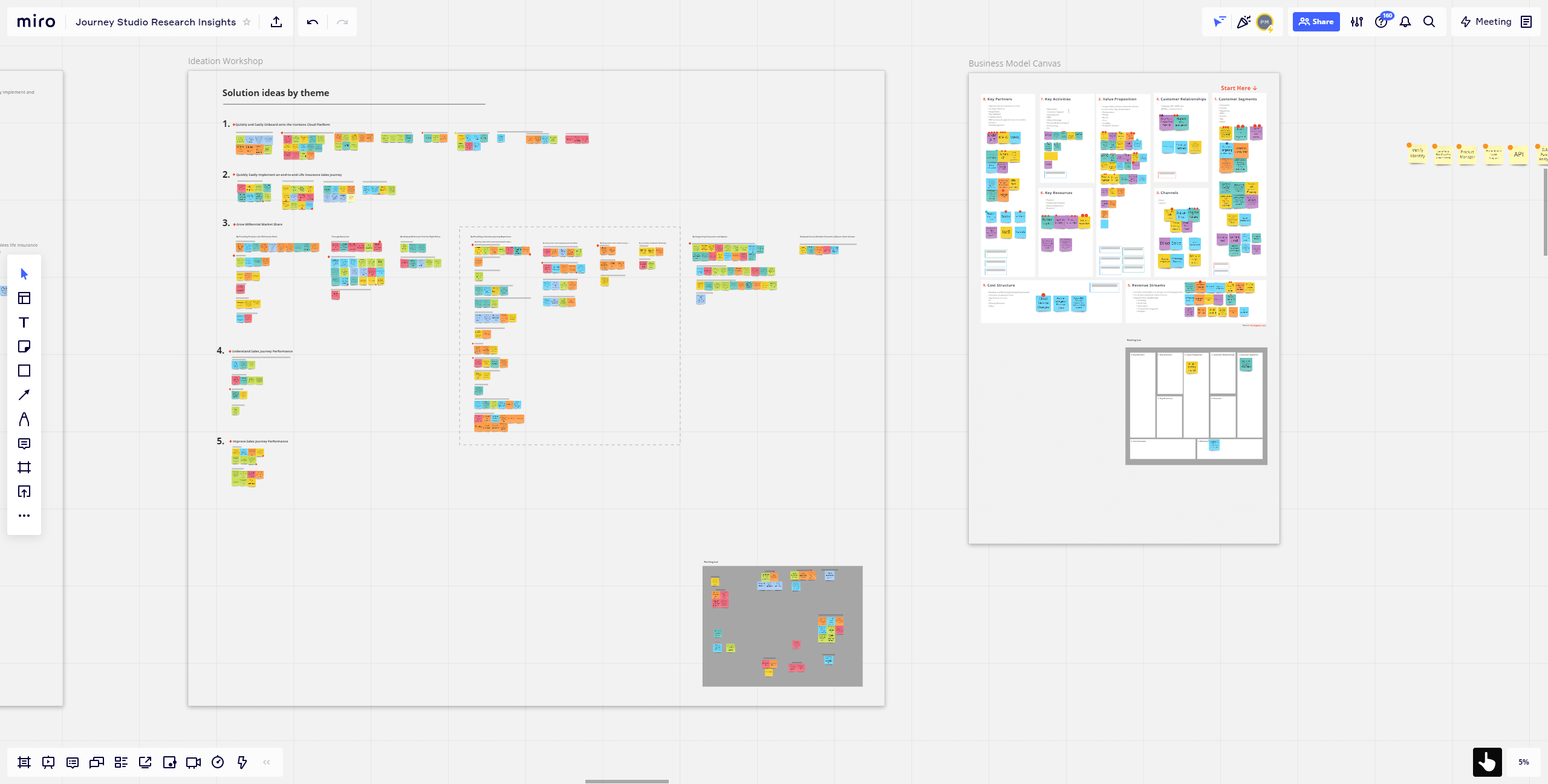
Research and discovery
From the moment they kick off a project, team members can share product vision docs to ensure everyone is aligned on strategy. The team starts with user research then brings groups of existing and potential customers into a workshop with the team in Miro. They use Miro’s Timer and Voting features to facilitate large and small group activities and breakout rooms to divide up, then work in separate areas of the infinite board for one-on-one interviews.
Other activities that happen at this stage include process mapping, project kick-offs, and workshops to review customer challenges, and brainstorm potential solutions in real-time — all on one board. In this way, Miro serves as an effective knowledge hub with referenceable resources that span the life of the project, ensuring nothing is lost or forgotten and bridging team silos that often lead to duplicate work and misalignments.
Miro is great as a knowledge base. A lot of research findings are relevant to multiple teams, and Miro helps us disseminate this in a visual way, which improves communication across teams.
PHILIP MCCUSKER, Product Manager at Munich Re
Prior to the pandemic, teams at Munich Re did all of their workshops manually, in person. They would cover a room in sticky notes to map out plans and ideas. But when people were working outside an office, product managers sought out ways to conduct hybrid and remote workshops so they could collaborate more flexibly across teams and timezones.
They came to Miro to recreate the workshop experience remotely but gained much more. Teams found the platform easy to use and new hire ramp time onto projects decreased. Custom templates made it easy to create and scale new processes across teams, saving time and driving consistent, repeatable outcomes. Miro’s digital-first mode of participation saved hours of manual transcription following workshops.
Finally, remote discovery workshops in Miro were so effective they were able to replace most of their in-person workshops. The cost and time savings from eliminating travel has freed them up to run more frequent customer workshops. We’ll share more on this and the other ROI they have experienced later on.
In our virtual workshops we bring in cross-functional teams and potential customers to ideate and present problems, capture feedback, and interact in real-time. It truly is ‘solution design,’ all contained in one Miro board.
PHILIP MCCUSTER, Product Manager, Journey Studio
Analysis
The next stage of the process is analysis, which includes gathering data and research to identify customer needs. Product teams document and annotate their competitive analysis and research findings with screenshots, quotes, and diagrams and produce outputs to help refine the direction.
Once they have this raw information, teams at Munich Re-engage in needs analysis or create empathy maps to articulate what they know about their users based on the information they’ve gathered. The Automation Solutions team highlights how Miro enables work to flow naturally — how they can use intuitive features like sticky notes and sketches to connect their ideas.
“We quickly went from never using Miro to really pushing its boundaries. Now I’ll do a piece of research, record, annotate, and bring it into Miro to do needs analysis and empathy mapping, reducing context switching and time to value.“
EMANUEL NEUMANN, Senior Product Designer at Munich Re
Over the course of a single project, the team might need to reference information from many sources to use as inputs for technical diagrams, user journeys, brainstorms, feedback meetings, workshops, and more as they move closer to the final solution. Since all artifacts are captured in a single source of truth where they work daily, team members can confidently rely on their project boards to understand crucial context, reducing shoulder tapping, confusion, and context switching.
See how Miro supports product teams
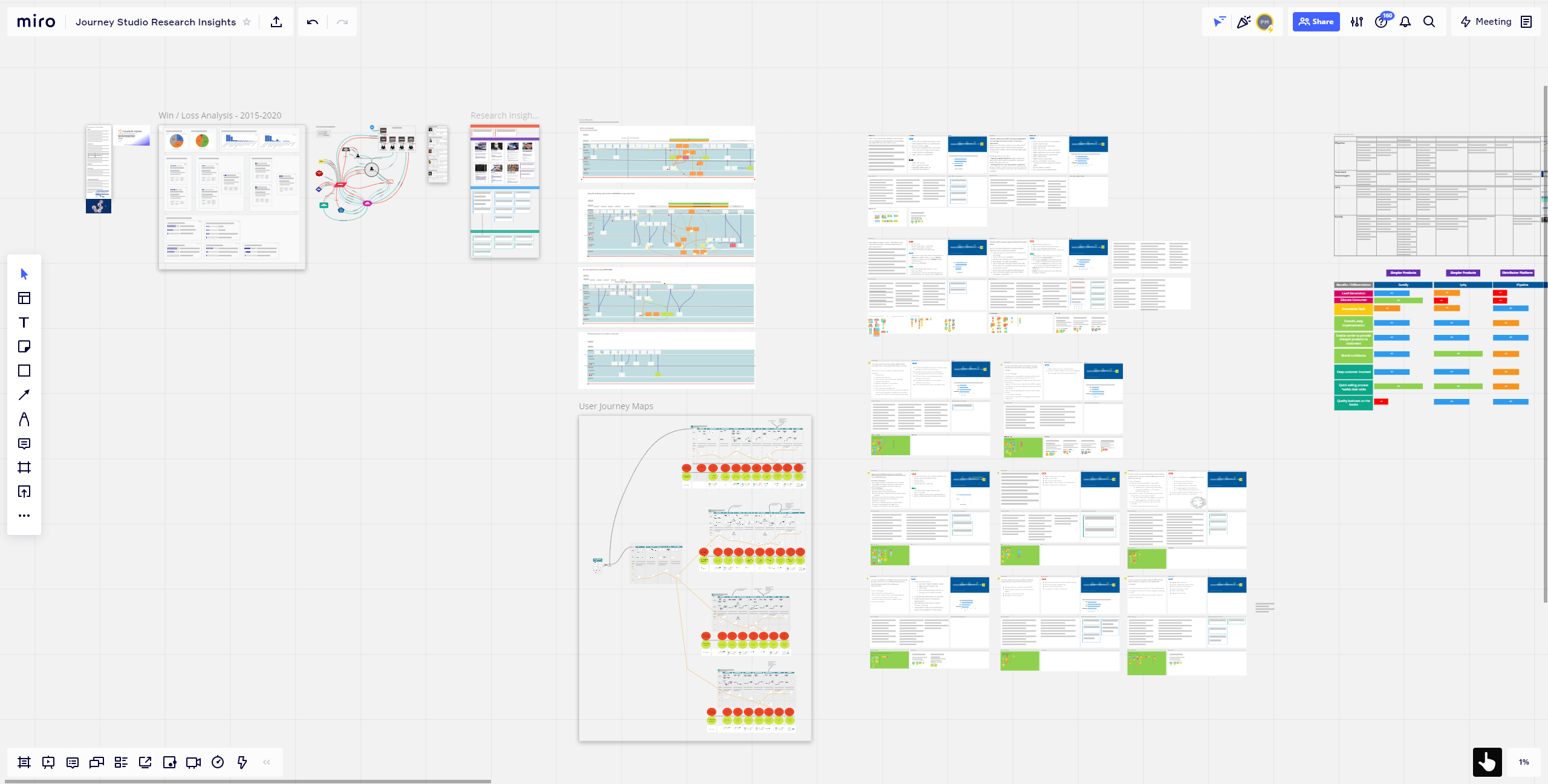
Collecting ideas along the way is crucially important for the next step in the process: “ideation + exploration.” Teams sort through the information produced during the earlier phases of the project such as rough sketches, ideas from workshops, competitive references, empathy maps, etc., and develop their high-level vision for the solution. The exact format can vary based on the project, but templates make it easy to draw up storyboards, journey maps, and user flows that say things better than words alone.
Rapid prototyping
Once the team has selected solution ideas that they want to get feedback on, the Munich Re team begins prototyping. Product managers take advantage of Miro’s easy-to-use tools and templates to spin up fast, low-fidelity prototypes and wireframes on the same board as the user research so they can center on the customer.

Emanuel and the design team use Miro in conjunction with Figma. They rely on Miro for initial storyboarding, sketching, and wireframing — and whenever they need to illustrate concepts. The wireframing plugin combined with presentation mode enables them to quickly spin up a professional-looking view of their design direction to get stakeholder signoff. Then, in Figma, they invest more time into the detailed work of crafting high-fidelity interface visualizations and interactive prototypes. This workflow allows them to maximize efficiency while maintaining quality.
It’s faster to do things in Miro — create lines, shapes, sticky notes, connect it together. That speed is critical. You’re not fighting the tool, you’re just letting the work happen.
PHILIP MCCUSKER, Product Manager at Munich Re
When it comes time to do a read-out of the entire project, teams organize their boards using frames that allow them to draw slides around the content they plan to present to stakeholders straight from the canvas. In Miro, presentations are interactive so they will also run feature prioritization activities, capture feedback, and make collaborative decisions from the same board. That way, product, design, and engineering teams are working off a single source of truth, preserving vital context and information for people who might join the project later.
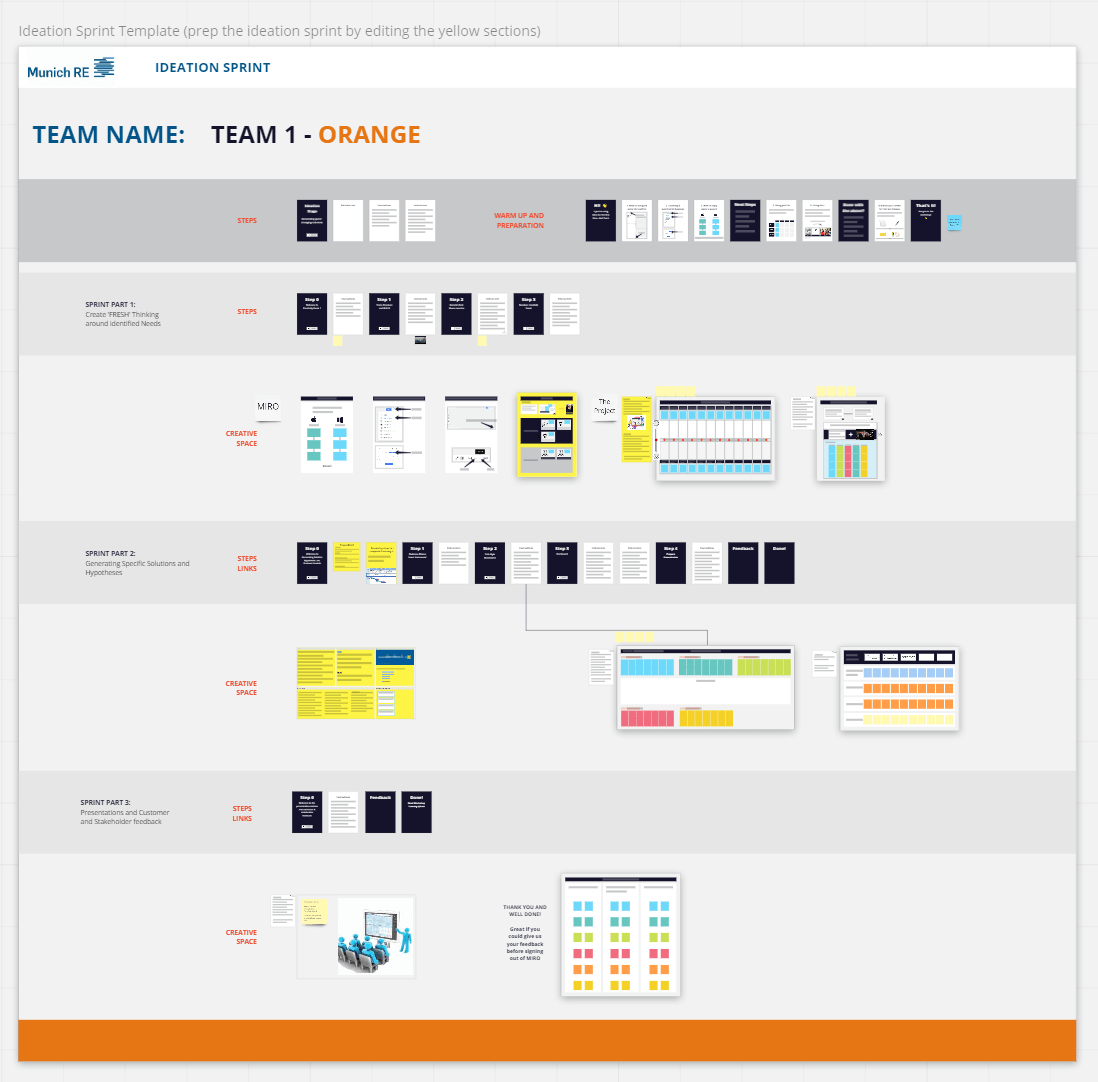
Delivering real ROI
At Munich Re, people strive to uphold two core values: to be forward-thinking, and to build expertise. Miro aligns with those values by enabling team members to broaden and develop their expertise.
“At the speed the world and the software industry are moving, a collaborative tool like Miro that’s intuitive for most people gives us an edge.”
PHILIP MCCUSKER, Product Manager at Munich Re
The pragmatic value is clear, too. Teams say they save upwards of $10,000 in travel and lodging per design session by running workshops in Miro, and with approximately 30 workshops per year, the savings are significant. In addition, the Automation Solutions team intends to increase Miro usage to host customer journey and solution design workshops, which will only continue to incur savings. Crucially, their workshops have also become more inclusive, since they now have the ability to invite customers who previously could not attend.
Customers love being involved, and the smaller workshops create a more intimate, engaged atmosphere. And because customers participate from day one, teams can reach decisions faster and keep the voice of the customer front and center throughout the design process.
“I’m now able to run a workshop that is inclusive of everyone and everything is digital. Imagine the time I’m saving — transcription isn’t necessary, we go straight to analysis.”
PHILIP MCCUSKER, Product Manager at Munich Re
Munich Re enjoys Miro Enterprise Plan benefits, such as advanced sharing options that ensure data privacy and confidentiality, user access management, and enhanced user permissions. The plan also allows them to reduce the number of tools and IT overhead in projects. By taking advantage of multi-team setup, cross-team shared templates, and Miro’s Flexible Licensing Plan, they can streamline key workflows in Miro while reducing friction and proliferation of point solutions.
With Miro at the core of how teams stay aligned, the team is moving faster, saving money, and creating better products for their customers. Best of all, people on the team can spend more time with their families because they aren’t traveling all the time. It’s a win-win for the business and their employees.


